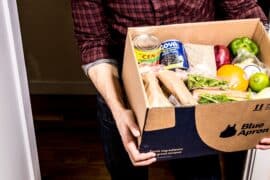The Ultimate Guide to Homemade Playdough Recipes: Fun for Every Season!
Welcome, awesome parents and guardians! Are you ready to dive into the whimsical world of homemade playdough? It’s not just a toy; it’s a journey into creativity, sensory development, and family bonding—and guess what? It’s insanely easy and fun! In this ultimate guide, we’ll share a variety of playdough recipes that are sure to keep your little ones engaged and their imaginations soaring all year round.
A Little Dough Goes a Long Way: The Benefits of Playdough Play
Before we get our hands floury, let’s knead through the cool benefits of playdough. It’s not just about making a mess (though that’s part of the fun!); it’s a powerhouse of developmental perks. When your kids squish, roll, and sculpt, they’re boosting their fine motor skills, enhancing creativity, and even reducing stress. This malleable friend can also be a great teaching tool for colors, shapes, and even basic math. Yes, playdough can count as a home-school win!
Classic No-Cook Playdough Recipe: The Foundation of Fun
First things first, let’s start with a classic no-cook playdough recipe. It’s the perfect canvas for all your playdough escapades and a great option when you’re short on time or just don’t want the hassle of cooking.
Ingredients:
- 2 cups all-purpose flour
- 1/2 cup salt
- 2 tablespoons cream of tartar (for elasticity)
- 2 tablespoons vegetable oil
- 1 cup boiling water
- Food coloring (optional)
- Essential oils for scent (optional)
Instructions:
- In a large mixing bowl, whisk together the flour, salt, and cream of tartar.
- Add the vegetable oil and stir until the mixture is crumbly.
- Carefully pour in the boiling water. Be mindful of the steam!
- Start kneading the dough with a spoon until it’s cool enough to handle.
- If you’re using food coloring, now’s the time to divide the dough and knead in a few drops to reach your desired color. Want a sensory boost? Add a drop or two of essential oil for a scented experience. Lavender for calm play, anyone?
- Once the dough is smooth and the color is evenly distributed, you’re ready to play! Store it in an airtight container when not in use to keep it soft and fresh.
There you have it—the simplest, yet most versatile playdough recipe that promises hours of fun. But wait, there’s more!
Seasonal Sensations: Themed Playdough Recipes
Why stop at the basics when you can sprinkle a little seasonal joy into your playdough making? Up next, we’ll get crafty with festive variations that celebrate the uniqueness of each season. Whether it’s glittery snow dough for winter wonderlands or vibrant springtime hues inspired by blooming flowers, each recipe has a seasonal twist that will make playtime extra special.
Ready to be the coolest playdough chef in town? Keep reading for recipes you’ll fall in love with, starting with a delightfully spooky Halloween-inspired dough that glows in the dark! Be sure to bookmark this page because this guide is your new go-to resource for easy and exciting playdough recipes that will keep the magic alive all year long.
Just imagine the giggles and the masterpieces that will come from these amazing concoctions. Whether you’re prepping for a rainy day activity, need a therapeutic break for your kiddos, or want to create custom party favors, these homemade playdough recipes are just what you need. So, roll up your sleeves and let’s get ready to mix, match, and mold some unforgettable memories!
Remember, the best playdough is the dough you make with love and laughter. From our crafty kitchen to yours — happy dough making!
Stay tuned for the next chapter where we reveal that epic glow-in-the-dark recipe and more playful secrets!

5 Key Things Parents Should Know When Preparing for Homemade Playdough Recipes
Embarking on the homemade playdough adventure is as exciting as it is educational. To make sure that your playdough-making endeavor is as smooth and joyous as possible, here are five key things every parent should know.
Safety First: Non-Toxic Ingredients
Children are naturally curious, and a taste-test is often part of their exploration process. Using non-toxic, food-grade ingredients in your playdough recipes allows you to rest easy, knowing that if a little bit goes from hands to mouth, it’s A-OK. Always start with kitchen staples such as flour, salt, and cream of tartar, ensuring that your creative time remains a worry-free zone for everyone involved.
The Importance of Supervision
When it’s time to whip up a batch of homemade playdough, having an adult present is crucial. Not only is supervision necessary for safe handling of hot water and food coloring, but it’s also an excellent opportunity to bond with your children over the tactile joy of dough-making. Plus, you’ll be there to guide the creative process and address any questions that your mini chefs might have!
Creating the Perfect Consistency
Is your dough too sticky or too crumbly? Don’t panic! Achieving the right consistency can be a bit of trial and error. If your playdough is too wet, add a little extra flour until it feels just right. If it’s too dry, a splash of water or oil can work wonders. Involve your kids in this process; it’s a practical lesson in problem-solving and changes in the state of matter!
Coloring with Care
Adding vibrancy to your playdough is a visual treat, but remember to use food coloring sparingly. A few drops are often enough to achieve the desired hue. Consider protecting surfaces and children’s clothing, as food coloring can stain. For an all-natural approach, you can explore coloring your dough with spices like turmeric for yellow or cocoa powder for brown.
Storage Solutions
Keeping your homemade playdough soft and usable for as long as possible is key to ongoing enjoyment. Store your dough in airtight containers or zip-lock bags to prevent it from drying out. If you notice the playdough starting to get a bit crusty, gently knead it until it returns to its original glorious texture. Label your containers with creation dates so you know when it’s time to cook up a fresh batch!
Armed with these essential tips, you’ll be well on your way to becoming a playdough pro! Go forth and create a cornucopia of colorful, squishy, and scented doughs that will become a staple of playtime in your household. Happy kneading!
Setting Up Your Playdough-Making Station: Prep for Success
To get the most out of your playdough-making experience, setting up the right environment is crucial. Here are some handy tips for creating the perfect playdough-making station:
- Choose a spacious area: Pick a work surface that provides ample room to spread out ingredients and allows for easy clean-up, like a kitchen table covered with a plastic tablecloth or a large wipeable mat.
- Gather all ingredients: Have all your ingredients and tools like bowls, spoons, and measuring cups at hand to avoid mid-recipe dashes that can disrupt the fun.
- Pop on some playful tunes: Music can make the playdough-making process even more enjoyable. Choose lively, kid-friendly songs to sing along to while kneading.
- Moulds and cutters: Enhance the play experience with cookie cutters, silicone cupcake cases, and moulds to inspire endless creations.
- Keep it clean: Be ready with a damp cloth or paper towels for quick clean-ups, especially after dealing with food coloring.
Now that we’ve covered the fundamentals, let’s move on to some more exciting, season-specific playdough recipes that will spark joy and creativity in your little ones, no matter the time of year.
Make sure to catch our next dough-lightful installment, where we’ll be whipping up that magical glow-in-the-dark playdough and exploring even more themed recipes to add to your collection. The adventure continues!
. For more information see here
Disclaimer
The articles available via our website provide general information only and we strongly urge readers to exercise caution and conduct their own thorough research and fact-checking. The information presented should not be taken as absolute truth, and, to the maximum extent permitted by law, we will not be held liable for any inaccuracies or errors in the content. It is essential for individuals to independently verify and validate the information before making any decisions or taking any actions based on the articles.




